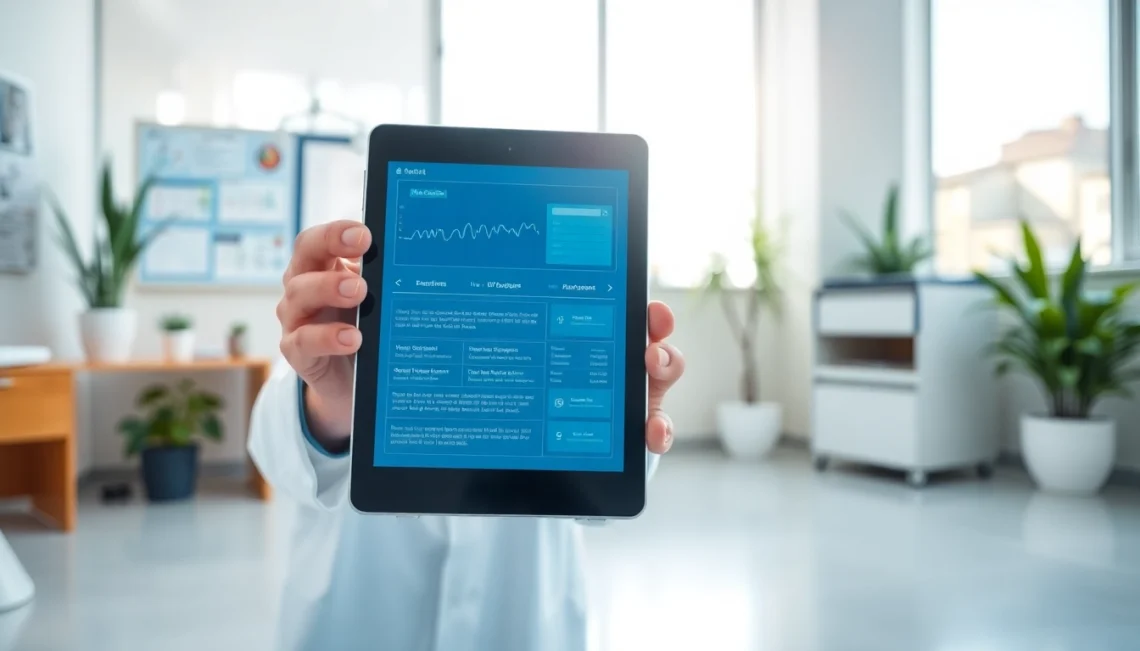The Importance of Eprescribing Software for Doctors
In the modern healthcare landscape, efficiency, accuracy, and patient safety have become paramount. One of the technologies that have significantly enhanced these aspects is eprescribing software for doctors. This tool not only streamlines the prescribing process but also bridges the gap between healthcare providers and patients. Through this article, we will explore the various facets of e-prescribing software, from its definition to its transformative impact on practices.
Understanding Eprescribing Software
Eprescribing software is a digital tool that enables healthcare providers to create and transmit prescriptions electronically instead of relying on traditional paper prescriptions. Leveraging cloud technology and integrated systems, e-prescribing software allows doctors to send prescriptions directly to pharmacies and access patient medication histories promptly. The implementation of this technology enhances communication between practitioners, pharmacists, and patients, ensuring that critical information is accessible at all times.
Benefits for Doctors and Patients
The advantages of e-prescribing software extend beyond mere convenience. For doctors, it simplifies the prescription-writing process by eliminating the potential for handwriting errors, reducing the administrative burden, and facilitating better medication management. For patients, it means fewer delays in obtaining their medications, increased safety from drug interactions, and the ability to track their prescriptions digitally. The positive ripple effects of this technology significantly enhance patient outcomes and satisfaction.
Common Misconceptions
Despite its numerous benefits, misconceptions about e-prescribing software persist. Many healthcare professionals worry about technology complexity, fearing it might add to their workload rather than alleviate it. Others are concerned about data security and patient privacy. However, robust encryption measures and compliance with regulatory standards are crucial features of high-quality e-prescribing software that address these issues and protect sensitive patient information.
How Eprescribing Software Improves Workflow
Streamlining Prescription Processes
The primary purpose of e-prescribing software is to streamline prescription processes. By allowing physicians to write and send prescriptions electronically, it reduces the time spent on clerical tasks. This efficiency not only increases the number of patients a doctor can see in a day but also enhances the quality of care provided. Moreover, automated refill requests and prescription change notifications significantly reduce the back-and-forth communication often required in traditional systems.
Reducing Errors and Increasing Accuracy
Errors in prescription medication can have dire consequences. Eprescribing software helps mitigate these risks through features like real-time drug interaction checks, allergy alerts, and dosage guidelines. Such functionalities enhance the accuracy of prescriptions, leading to improved patient safety and better overall healthcare outcomes. Studies show that practices adopting e-prescribing report a noticeable decline in medication errors, thus supporting the argument for its widespread use among doctors.
Integration with Existing Systems
One of the impressive capabilities of e-prescribing software is its ability to integrate seamlessly with existing Electronic Health Record (EHR) systems. This synchronicity means that when a prescription is generated, the patient’s health information is readily available, allowing for informed clinical decisions. Additionally, integration fosters improved documentation, making it easier for healthcare providers to track treatment plans and patient histories all in one place.
Key Features to Look for in Eprescribing Software
User-Friendly Interface
A user-friendly interface is critical for the successful implementation of e-prescribing software. Doctors should look for intuitive navigation, clear menus, and streamlined workflows that simplify the prescribing process. The easier it is for doctors to use the software, the quicker they can embrace it and incorporate it into their daily practices.
Real-Time Drug Interaction Checking
One of the invaluable features of e-prescribing software is the ability to check for drug interactions in real-time. This capability allows providers to see potential contraindications as they write prescriptions, significantly reducing the risk of adverse drug events. Having access to this information not only enhances patient safety but also builds trust between patients and their healthcare providers.
Secure Prescription Transmission
Security is paramount when it comes to patient data, and quality e-prescribing software includes robust measures to safeguard information. Features like advanced encryption and secure authentication protocols ensure that prescriptions are transmitted safely, protecting both healthcare providers and patients from potential data breaches.
Challenges and Solutions in Using Eprescribing Software
Addressing Technical Barriers
While technology offers significant advantages, transitioning to e-prescribing can pose several technical challenges. Issues related to software compatibility, internet outages, or server downtimes can disrupt services. To address these barriers, healthcare practices should invest in reliable IT support and ensure that their infrastructure can support the new software. Moreover, selecting cloud-based solutions can alleviate many technical concerns by offering greater flexibility and redundancy.
Training Needs for Medical Staff
Implementing e-prescribing software necessitates effective training for medical staff to ensure smooth adoption. Without adequate training, medical professionals may feel overwhelmed by the new technology, which could lead to decreased productivity. Offering comprehensive training programs, along with ongoing support, is essential in helping staff feel confident in utilizing the software. Regular refresher courses can also be beneficial in keeping staff updated on any new features or changes.
Ensuring Patient Privacy and Data Security
Addressing patient privacy concerns is paramount when utilizing e-prescribing software. Healthcare providers must ensure compliance with regulations like HIPAA to protect sensitive patient information. Employing software solutions with built-in security measures, such as data encryption and audit trails, enhances patient trust and safeguards against potential data breaches. Regular compliance training for staff can further solidify the importance of data security in everyday practice.
Measuring the Impact of Eprescribing Software
Performance Metrics to Consider
To evaluate the effectiveness of e-prescribing software, practices should establish performance metrics that measure improvement in workflow, patient safety, and overall satisfaction. Key performance indicators might include the rate of prescription errors pre- and post-implementation, average time spent on prescription writing, and the number of patient complaints regarding medication access. Regularly reviewing these metrics allows practices to identify areas for further improvement and adjust their strategies accordingly.
Patient Satisfaction and Engagement
Patient engagement is crucial for successful health outcomes, and e-prescribing software plays an important role in enhancing this engagement. By reducing the time it takes for patients to receive their medications and providing easy access to prescription information, practices using e-prescribing often report higher levels of patient satisfaction. Collecting patient feedback through surveys can help practices gauge the impact of e-prescribing on their overall experience and directly inform future improvements.
Long-Term Benefits for Medical Practices
Investing in e-prescribing software yields long-term benefits for medical practices, yielding both financial and operational gains. By streamlining workflows and improving patient outcomes, practices can enhance their overall efficiency and productivity. As patient satisfaction rises, practices may see an increase in patient retention and referrals, significantly contributing to their bottom line. In addition, adopting e-prescribing can decrease administrative costs associated with paper prescription management, further bolstering financial health.





